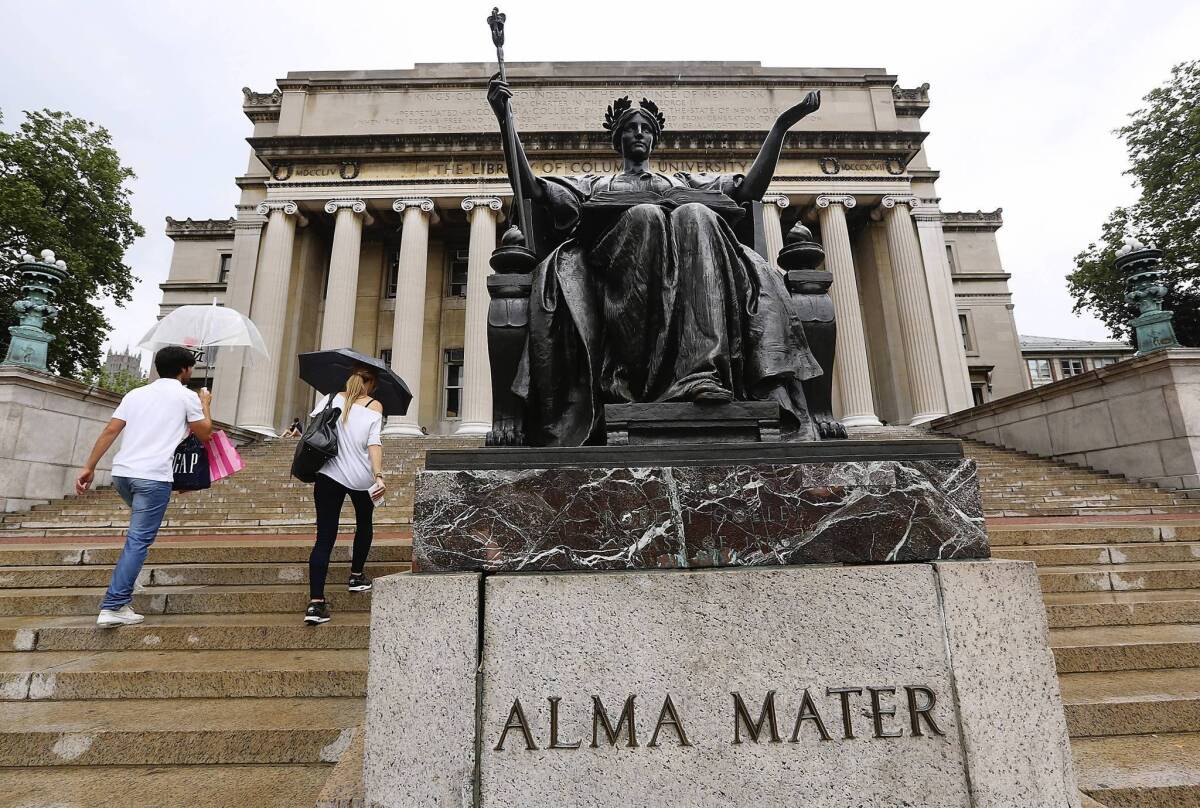Looking for a solution to the jump in student loan interest rates

- Share via
WASHINGTON — Antonya Bruno, a senior at Howard University, has used the maximum amount of federal loans over the last three years to help pay her steadily climbing tuition.
“It’s been very helpful,” she said, happy that she has avoided taking out more expensive private loans.
Because of a political stalemate, however, Bruno will see the interest rate on her new loans double to 6.8% unless Congress can pass a retroactive fix. It could add $1,000 over the life of her loans, and cost new students four times as much.
“It’s tough to know interest rates will go up, but I’m glad it’s at least not for all four of my years,” said Bruno, who has paid internships during the school year. “I feel bad for people who are now entering college, who will have to pay more than I ever will.”
Bruno and students all over the country are the victims of an impasse cutting across party lines in Congress that led to the rate increase, effective July 1.
Some Democrats are pushing for a short-term extension of low rates, while a bipartisan group of senators is seeking support for different variations of a proposal to deal with the problem over the long term by linking interest rates to the bond market. That long-term change, a central idea of recent proposals by Republicans, Democrats and the White House, would tie all federal student loan interest rates to the government’s cost of borrowing.
This could help student and family borrowers by offering low rates and getting the matter out of the political arena, according to University of Michigan professor Susan Dynarski and Indiana University professor Don Hossler, both experts on higher education.
Republicans and the White House proposed tying student federal loan interest rates to the 10-year Treasury borrowing rate, 2.5%, on July 1, plus an added markup. A Democratic proposal preferred the Treasury’s 91-day T-bill rate.
However, as the economy improves, rates will increase, creating a need for protections for borrowers, some say.
Under the bipartisan proposal, rates on these federal Stafford loans could surpass 6.8% by 2017 if interest rates go up as projected. No caps on loan rates are included in that proposal.
Although a cap on rates could protect borrowers, it would also increase costs to the federal government, said Robert Gordon of the Brookings Institution and Terry Hartle, vice president of the American Council on Education.
Congress capped variable student loan interest rates from 1992 until 2007, when Congress set the low fixed rates that expired July 1. Last year’s extension of those rates cost $6.7 billion, which Congress covered by raising federal insurance premiums and limiting how long students are eligible for federal loans.
“It’s a win for students and for taxpayers when you talk about what interest rates best balance the need to make sure college remains affordable and the limited resources we have,” Gordon said.
Sen. Jack Reed (D-R.I.) says a one-year extension would allow lawmakers to consider the issue during the upcoming reauthorization of the Higher Education Act.
“Public hearings and deliberations tend to lead to better policy than deals made behind closed doors at the last minute,” said Pauline Abernathy, vice president of the Institute for College Access and Success.
Another extension will still leave borrowers of unsubsidized Stafford and PLUS loans paying above-market interest rates, said Justin Draeger, president of the National Assn. of Student Financial Aid Administrators.
The Senate is planning to vote Wednesday on an extension.
American University senior Deon Jones said an extension would be a Band-Aid.
“Students taking out loans this fall are thinking, ‘Thank you, Lord, I don’t have to pay more now,’” Jones said. “But we still have to deal with this problem. It’s only going to get worse.”
Although Jones gets enough in grants that he does not have to borrow the maximum, he said, “I am from a low-income background, and know a lot of friends who are taking out loans and worried about how they’re going to pay for those loans.”
Hossler, the Indiana University expert, said rising interest rates and increasing reliance on student loans raised ethical questions.
“We’re now using loans as the primary vehicle for access for low-income students who already start with economic disadvantages,” Hossler said. “I think it’s a legitimate question to ask: How much more do we want to load them up with loans?”
More to Read
Sign up for Essential California
The most important California stories and recommendations in your inbox every morning.
You may occasionally receive promotional content from the Los Angeles Times.










